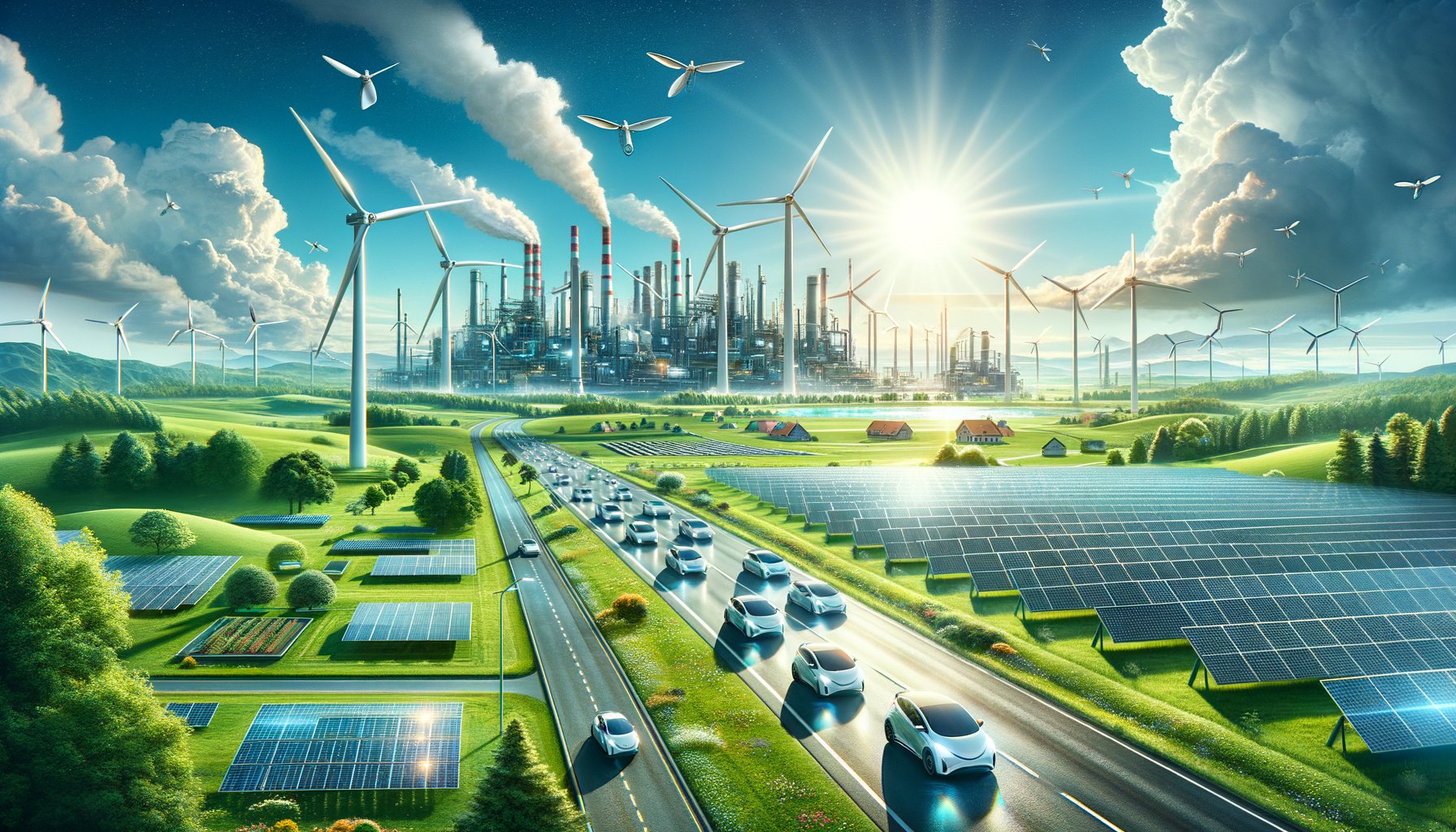Physical Address
304 North Cardinal St.
Dorchester Center, MA 02124
Physical Address
304 North Cardinal St.
Dorchester Center, MA 02124

As we stand on the precipice of a new era, one defined by unprecedented technological advancements and an urgent need to safeguard our environment, green technologies are rapidly emerging as the torchbearers of this revolution. These innovative solutions not only promise to reshape our future but also hold the key to sustainable development and environmental preservation.
Before delving into the transformative potential of these technologies, it is essential to understand what they entail. Green technology, often referred to as ‘clean technology’ or ‘environmental technology’, encompasses a wide array of products, services, and practices designed with the primary objective of minimising harm to the environment while promoting sustainability.
The sun’s energy has been harnessed by humanity for centuries. However, recent technological leaps have catapulted solar power into the forefront of renewable energy sources. Innovations in photovoltaic cells and solar panel designs have made it possible for homes and businesses alike to generate their electricity through sunlight – a clean and inexhaustible resource.
Wind turbines that dot landscapes across the world are a testament to another powerful force harnessed for green energy – wind. As wind flows across turbine blades, it spins a generator that produces electricity. Modern turbines can generate substantial amounts of power even in areas with relatively low wind speeds, making wind energy an increasingly viable option for many regions worldwide.
Biofuels represent another significant stride in green technology. Derived from organic material like plant matter or animal waste, biofuels offer a renewable alternative to fossil fuels for powering vehicles and heating homes. Current research is focused on developing second-generation biofuels that utilise non-food crops or waste biomass, significantly reducing the environmental impact of fuel production.
The transportation sector has also seen a surge in green technology with the advent of electric vehicles (EVs). EVs run on electricity stored in rechargeable batteries instead of burning fossil fuels. With zero tailpipe emissions and the potential to be powered by renewable energy sources, EVs offer a promising path towards decarbonising transportation.
Energy-efficient appliances are another manifestation of green technology that has seamlessly integrated into our daily lives. From LED light bulbs to high-efficiency washing machines, these devices consume less energy for the same performance, reducing our carbon footprint and saving us money in the process.
A lesser-known but equally important aspect of green technology is smart grid technology. Smart grids use digital communication technology to detect and react to local changes in electricity usage, improving reliability and efficiency while reducing energy waste.
In the construction industry, sustainable building materials like recycled steel, bamboo, straw bales, and reclaimed wood are revolutionising traditional practices. These materials not only reduce construction’s environmental impact but also enhance energy efficiency and indoor air quality in completed buildings.
Nanotechnology holds immense potential for green technologies as well. From creating more efficient solar panels and batteries to developing catalysts that can convert waste heat into electricity or purify water using sunlight – nanotechnology could radically transform our approach to sustainability.
The burgeoning field of green technologies offers an optimistic outlook for a future where technological progress does not come at the expense of our planet. As we continue to innovate and adopt these solutions on a global scale, we can look forward to a world powered by clean, renewable energy and guided by principles of sustainability.
Our journey towards this green future may be fraught with challenges, but the rewards – a healthier planet, sustainable growth, and a secure future for generations to come – are well worth the effort. So let us embrace these technologies that are not just revolutionising our world but also preserving it for the future.